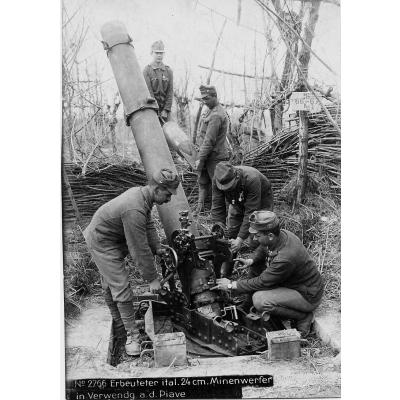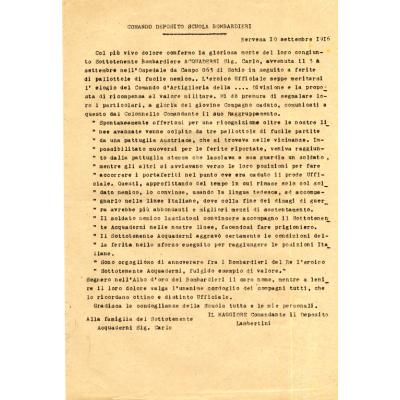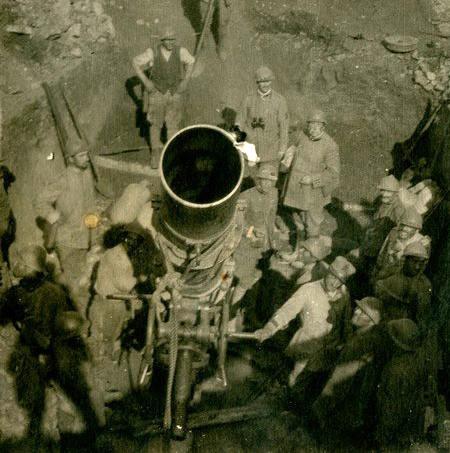Schede
The effectiveness of the weapon was conditioned by adverse atmospheric conditions, because a downpour of water inside the launch tube had the effect of wetting the triggers, causing an empty shot, mists and low clouds prevented the accurate observation of the shot, while strong gusts of wind affected the trajectory of the bombs; for these reasons the bombing was interrupted almost immediately and the Italian infantry found the Austrina grids intact.
The retreat of Caporetto caused the loss of hundreds of bombers, so that at the end of November 1917 a considerable force of officers and troops of the bomber course was available without precise tasks. The Supreme Command ordered the formation of two brigades of bombers - riflemen and an autonomous regiment. The two big units took the name of 1st and 2nd Bomber Brigade, each formed by 3 regiments on 3 groups and 3 machine-gun companies; the two brigades passed in force to the 23rd division along the line of the lower Piave river. More valid was the contribution to the two battles of arrest fought by our army in November and December 1917, of the trench bomb throwers of caliber from 58 to 70 mm; they, in groups or isolated weapons, were employed in nocturnal shots of disturbance or against the defensice works of the enemy, to beat assemblages of troops sheltered in the trenches or walkways from which the reinforcements flowed. An important problem radically solved by the Susegana School in 1917 was that of the repair of materials. The bombs that returned from the front, while they were sent to the manufacturing workshops, were taked to Susegana and restored to efficiency by modernly equipped workshops; then they were tested at the firing range of the school and the returned to the front. In mid-August 1918, a new Stokes-type bomb thrower, Anglo-French, was distributed to the Italian infantry units; the weapon was easily carried by arm, supported by a bipod and with a cadence of 8 - 10 shots per minute:it was very similar to the mortar of World War II.
Although the Bomber Specialty had a very short life - in fact it was disbanded immediately after the end of the war - it experienced a remarkable organic development during the conflict and contributed greatly to the final victory. The school of bombers was located in the town of Susegana, well served by a road of great importance, by the railway and with sufficient space for the firing range; also in the nearby town of Mandre and old farm offered accommodation and rooms for the school of bombers officers. The school became operational towards the end of 1915, to train 170,000 artillery soldiers in the new weapon, was transferred to Sassuolo in November 1917, ceased after 1918.The exercices lasted 4 months with 34,000 soldiers per quarter, the firing range used bombers of caliber from 50 to 400mm. Bibliography: Filippo Cappellano, Bruno Marcuzzo, I Bombardieri del Re, Udine, Gaspari ed., 2005
Paolo Antolini
Traduzione di Ethan Finn Hopkins, in collaborazione con il Liceo Linguistico Internazionale C. Boldrini di Bologna, marzo 2022.





